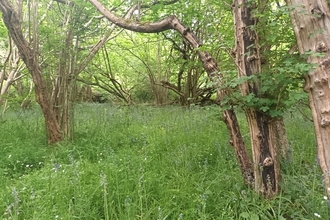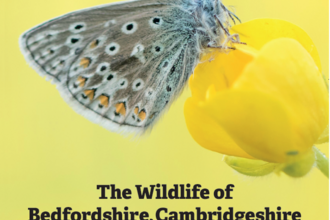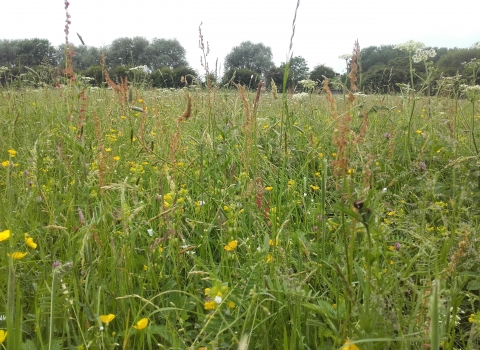One of the starkest statistics in nature conservation is the 97% loss of wildflower meadows since WWII. In Northamptonshire the effects of agricultural intensification, urban expansion and gravel extraction mean that we have lost more than most. Many of our remaining grasslands are urban fringe sites that have escaped these threats and provide a valuable wildlife asset and equally important green space for local people. Here is the diverging history of just two such sites:
On the edge of Wellingborough lies a series of three fields alongside a brook. These have been pasture for many years, as evidenced by their ridge and furrow topography, and now lie sandwiched between a supermarket and a housing estate. Designated a Local Wildlife Site in 1991, for their species-rich neutral grassland, they have declined over the past 20 years as traditional management was abandoned. Various developers bought the land and horses grazed unchecked leaving a mosaic of close-cropped grassland and nettle-dominated patches.
One of the starkest statistics in nature conservation is the 97% loss of wildflower meadows since WWII
These same fields are not however neglected by the locals - numerous informal pathways provide access along a green corridor into town or just a scenic short-cut. A couple of years ago the horses left and the grassland has since shown glimpses of its former self; knapweed and ladies bedstraw are flowering, anthills have survived and 12 species of butterfly have been recorded. Unlike the horses the threat of development hasn’t gone away and in the next few months the Planning Inspectorate will decide the site’s fate; either half will be built-on, with the remainder restored to meadow, or the whole site will be left to take its chance again.
Just outside Northampton lies Kingsthorpe North Meadows. An unmanaged series of fields with a small wetland Local Wildlife Site in the corner, the site was bought by the local community seven years ago as a local green space. Apart from the excellent little wetland, the tall grassy fields, sandwiched between a housing estate and the river, held little botanical interest. An annual hay cut was introduced after a couple of years, revealing sections of ridge and furrow, the following year patches of birds-foot-trefoil and lesser stitchwort emerged. The hay cuts have continued and each year new species have appeared and spread; meadow vetchling, cuckooflower and meadow saxifrage.
The wetland is cut and raked each year and a natural dam has been installed to prevent it drying up; great burnet has now joined the marsh marigold. Many species of butterfly have been recorded, little owl and bats are seasonal visitors and the least rich compartment is being restored with the help of the Wildlife Trust through the Coronations Meadows project. Interpretation boards highlight the importance of the site to locals and visitors alike. The site was resurveyed as part of the LWS programme this summer and in the next few months the LWS Partnership will decide whether the whole site is now worthy of LWS status.





